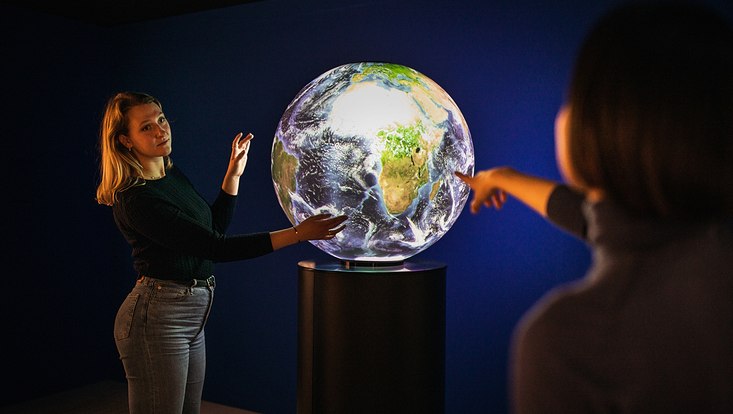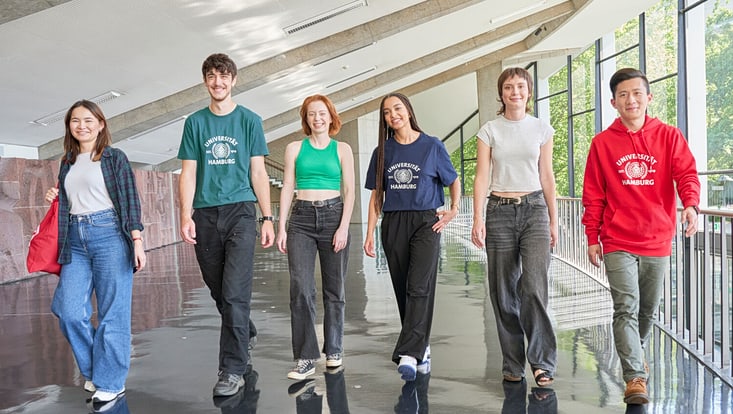and Society (CLICCS)
Hamburg Hosts Climate Modelling Summit
3 May 2024, by Miriam Frieß

Photo: Esfandiari/UHH
Collaboration instead of academic competition: More than 100 experts attended the World Climate Research Program’s (WCRP) meeting for the first working session of ESMO (Earth System Modelling and Observation), a new core project of the Program. We spoke about the meeting with Professor Tatiana Ilyina, co-Chair of the Working Group on Coupled Modeling which is a group within ESMO.

Professor Ilyina, how would you describe the meeting?
It was a meeting of researchers who work in different areas of Earth system modelling and observations, now governed under ESMO. The goal was to decide which research topics to prioritize in climate research in the next few years. To make sure as many people could take part as possible, online attendance was also an option. Roughly 60 researchers gathered here in Hamburg, and we had a total of more than 100 participants from more than 20 countries.
Why was it hosted in Hamburg?
One can say that Hamburg is the “capital” of climate modelling in Germany, with a lot of expertise in various key aspects of the climate research. It was here that, back in the 1990s, the idea arose to combine separate circulation models of the atmosphere and ocean, to a coupled climate model. Also the project office of ESMO is located in Hamburg at the German Climate Computing Center. As such, Hamburg was the obvious choice for our meeting.
And what exactly was discussed?
A game-changing decision made was that, from now on, we would prioritize simulations in which CO2 emissions instead of CO2 concentrations are prescribed in the climate simulations for the “Coupled Model Intercomparison Project.” The concentration of CO2 in the atmosphere changes over decades, while emissions are far more dynamic and directly connected to human actions. This approach links climate policy with the responses in the Earth system. We also discussed technological advances – like artificial intelligence – and how they should be integrated into our work. This meeting was the right place for discussions like that.
Why?
WCRP created a community in which we achieve consensus on major decisions, which allows us to make progress together. Due to its nature, there usually is a certain competitive mindset in the academic world. Yet people come together and all pitch in to coordinate projects and pursue a higher goal. Personally, I consider this aspect to be essential. For me, the meeting was characterized by a very positive, productive atmosphere that yielded a wealth of good ideas.
So, it was a climate modelling summit of sorts? Why is it important for researchers to make decisions together?
First of all, we researchers need to agree on certain standards that deliver reliable and precise results, and which can be compared with one another within the scientific community. At the same time, Earth system model simulations are highly relevant for broader society: The IPCC (Intergovernmental Panel on Climate Change) Assessment Reports, which offer input and a basis of discussion for political decisionmakers, are largely based on our models. Accordingly, our meeting was directly relevant to the next report. After all, the IPCC doesn’t conduct any research of its own; it compiles and condenses the findings of others – findings like ours. That’s why, in my eyes, the meeting was quite a historic moment.
More on Prof. Tatiana Ilyina
Tatiana Ilyina joins CLICCS and the MIN Faculty
Contact
Tatiana Ilyina
Universität Hamburg
Bundesstraße 55
20146 Hamburg
Raum G346
Tel.: +49 40 42838-7402
E-Mail: tatiana.ilyina"AT"mpimet.mpg.de , tatiana.ilyina"AT"uni-hamburg.de


